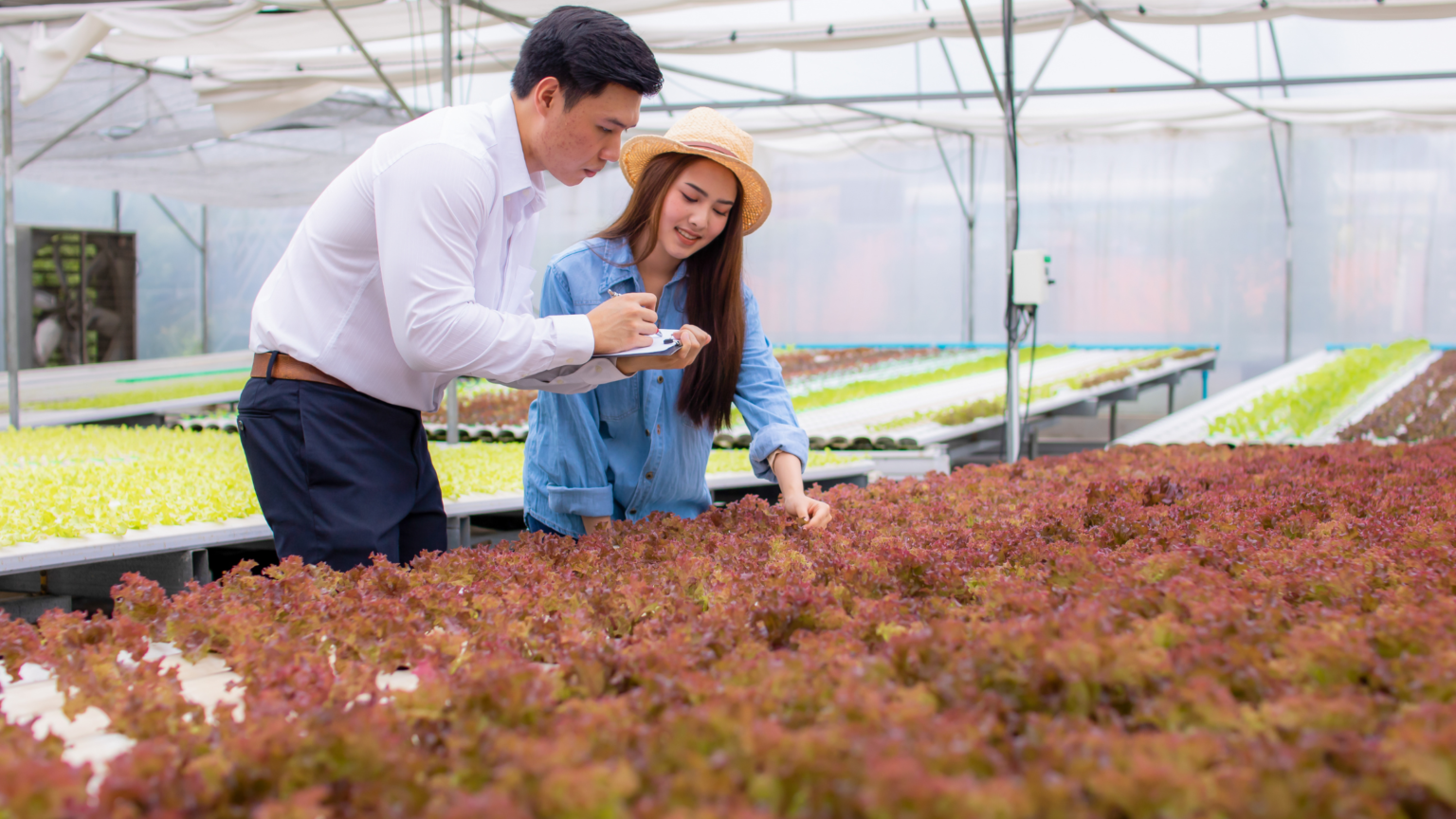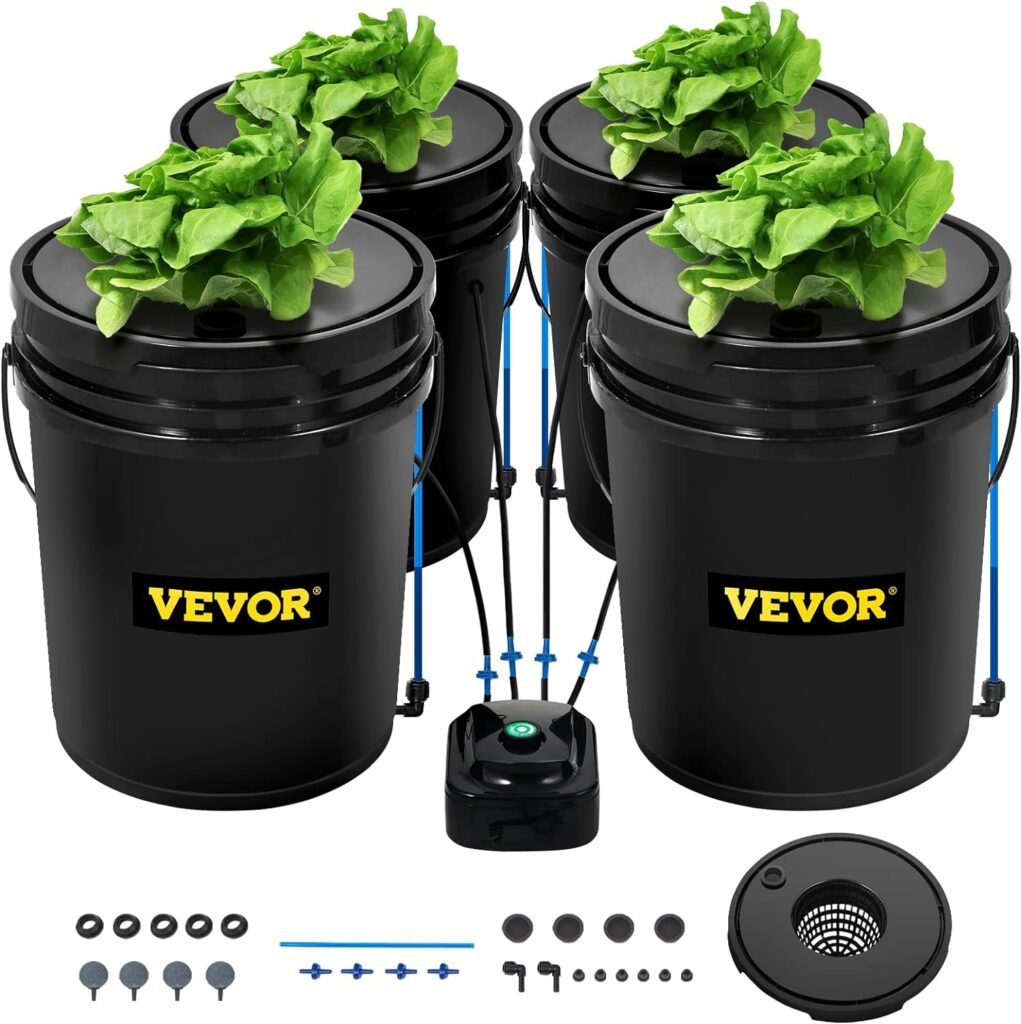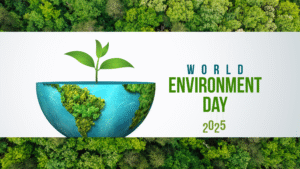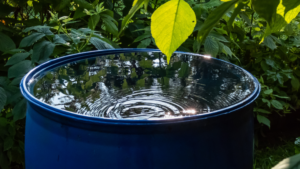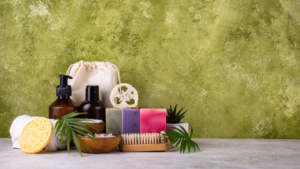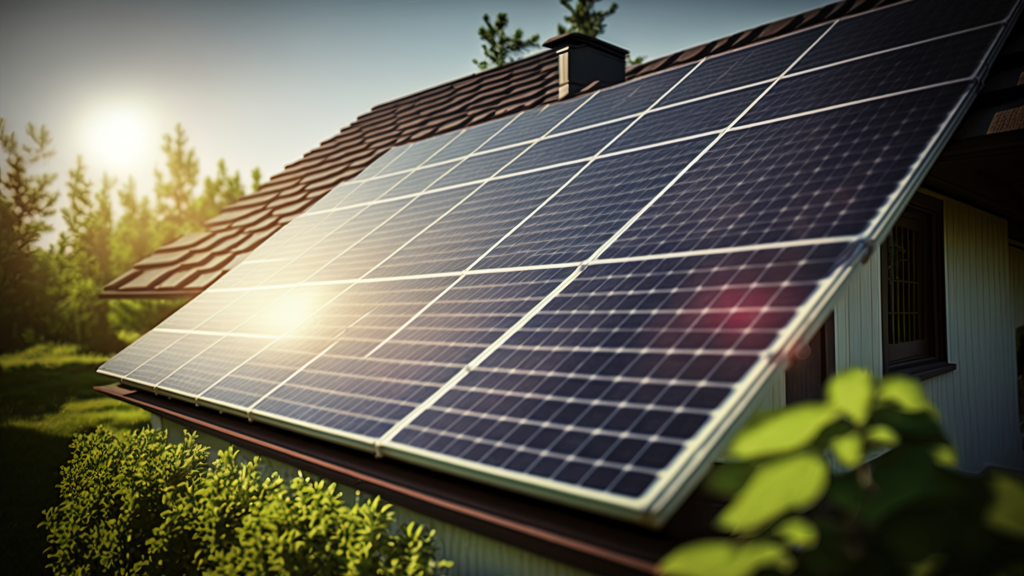It was a sunny afternoon, and I was visiting a friend who had the greenest thumb I’d ever seen. Without a literal speck of soil, her apartment was brimming with lush green and vibrant flowers were thriving. The sight was magical, and I couldn’t help but marvel at the beauty and health of her plants.
To my intrigue, she whispered about her secret, and introduced me to the world of hydroponics. Since that day, my gardening—has never been the same.
Hydroponics, the method of growing plants without soil, has transformed indoor gardening. Whether you’re a novice or an experienced gardener, I will sail you through all the insights you need to plan and succeed in hydroponics.
The Basics & Benefits of Hydroponics
Hydroponics is a method of growing plants using mineral nutrient solutions in water, without soil. This technique allows plants to grow up to 50% faster than traditional soil-based methods, as they receive a direct supply of nutrients (Resh, 2013).
Sil-less cultivation offers numerous advantages over traditional soil gardening. It allows for year-round cultivation, requires less water, and reduces the risk of soil-borne diseases. Additionally, hydroponic systems can be set up indoors, making them ideal for urban settings (Jones, 2005).
Getting Started with Hydroponic System
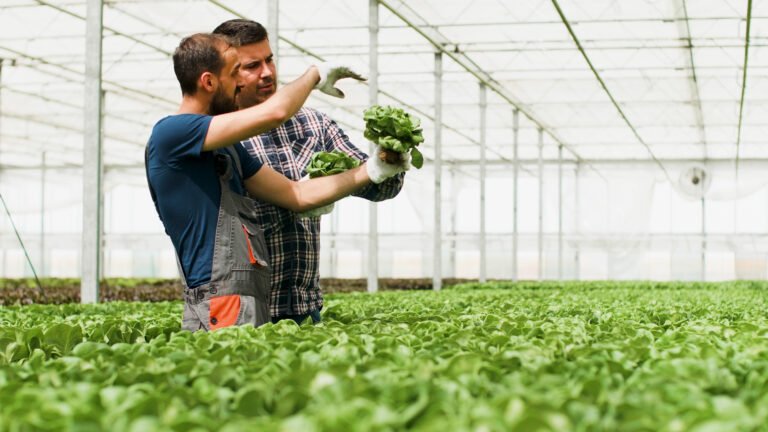
Choosing the Best Hydroponic System
It is crucial to select the best hydroponic system when starting. There are several types to consider and you can decide accordingly;
1. Nutrient Film Technique (NFT)
This system involves a continuous flow of nutrient solution over the roots. Different kinds of lettuce and other small, fast-growing plants are grown using the nutrient film approach. Commercial gardeners employ this technology not only to grow lettuce but also to cultivate baby greens, strawberries, and herbs.
NFT comes with two main components; the grow tray (or channel) and the reservoir that contains water and nutrients.
Lapond Hydroponic Grow Kit is a recommended NFT to produce high-quality vegetables and herbs.
– It is perfect for beginners and suitable for home, office, and gardens.
– This kit is easy to assemble with 36 plant sites.
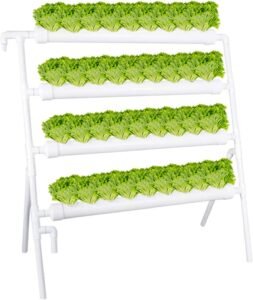
2. Deep Water Culture (DWC)
Deep water culture system makes your dream of soil-less cultivation an easy reality. For beginners, this system is often recommended due to its simplicity and effectiveness.
In DWC, plants are grown in net pots suspended above a reservoir supplied with water and nutrients. The roots are continuously supplied with an oxygen-rich water flow, which gives them the ideal conditions for growth. As the water flows, it removes pollutants and garbage providing plants with the finest nutrition.
Vevor DWC Hydroponic System is a complete system and comes with the brilliant features;
- 4PCS PP Buckets
- Powerful Air Pump & Air Stone
- User-friendly Design
– It is suitable for the greenhouse, grow tent, garden, office, home, and other indoors or outdoors.
3. Ebb and Flow (Flood and Drain)
This system floods the grow tray with nutrient solution periodically and then drains it back to the reservoir. It encourages healthy root development and rapid growth, much like giving the plants a soft and nutritious bath.
The ebb and flow hydroponic system is a good option for both novice and seasoned growers. May it not be an easy setup but is a very effective growth system. As a beginner, however, you may find ebb and flow hard to setup and maintain.
4. Wick System
Wick hydroponic is a passive system where nutrients are drawn up to the roots via a wick.
For small-scale installations or beginners who wish to experiment without requiring complicated equipment or regular upkeep, the wick method is ideal. People with little time or money can experiment with this hydroponic system.
Selecting Hydroponic Seeds
A good hydroponic garden depends on selecting the correct seeds. Certain plants grow better in this systems. To guarantee the best outcomes, look for seeds that are explicitly labeled for hydroponic use.
In hydroponic systems, seed pods are frequently used to cultivate plants without soil, providing precise control over the growth environment. They are designed to provide the necessary support and moisture for the seed to sprout and develop into a healthy seedling.
Essential Components of a Hydroponic System
Hydroponic Planter
A hydroponic planter is a container that holds the plants in place. It can range from simple pots to elaborated setups with multiple levels.
Hydroponic Fertilizers and Nutrients
In this system, a water-based solution provides the nutrients for the plants. The fertilizers used in general hydroponics are specifically designed to give plants the elements they require. Hydroponic fertilizer blends typically include nitrogen, phosphorus, potassium, calcium, magnesium, and trace elements.
Lighting
Since hydroponic gardens are often indoors, it is essential to provide enough lighting. LED grow lights are popular due to their efficiency and spectrum control.
I found MUFGA 12 Pods Hydroponics Growing System a great choice to begin with an effortless hydroponic plantation. With its sleek design and advanced technology, this system has everything necessary. It is perfect for both novice and seasoned gardeners.
Features
- Pollution-free organic fertilizer
- Self-illuminating & auto watering
- 12 pods harvesting
- 24 Watt LED grow lights
- 6.5 L water tank capacity
- 95% less water consumption
Best Plants to Grow with Hydroponics
Fruits, herbs, and vegetables can all be grown in a variety of ways with hydroponics’ adaptable and effective growing methods. As you begin, here are some of the best options to consider for your hydroponic garden;
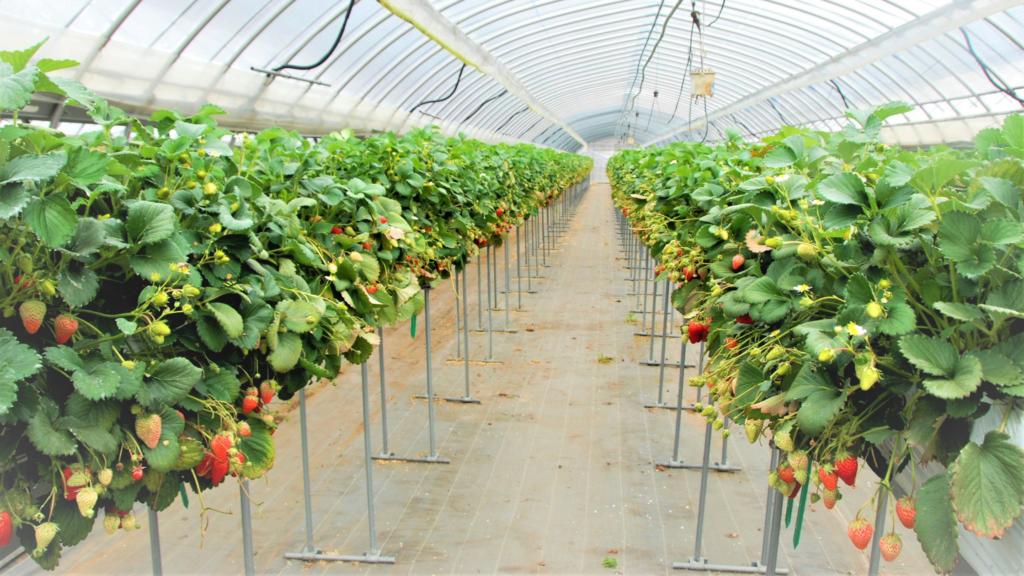
Vegetables
– Lettuce: One of the most popular vegetables to grow hydroponically, lettuce, is a fast-growing and is easy to care for. It thrives in systems like NFT, Aeroponics, and Ebb & Flow and grows ideally in 30 days on pH level 6 to 7.
– Tomatoes: When grown hydroponically, Tomatoes can experience faster growth rates and better fruit quality. They need a little higher pH of 5.8-6.5 and work extremely well with systems like Ebb and Flow. Research indicates that hydroponic tomatoes can outperform conventional approaches in terms of growth rates and fruit quality.
– Spinach: This leafy green vegetable is perfect for hydroponics, growing quickly and requiring minimal space. Keep pH 6 to 7.5 and expect growth in 30 to 40 days.
– Peppers: Both sweet and hot peppers can be grown hydroponically, providing a bountiful harvest with the right care.
Herbs
– Basil: Basil thrives in hydroponic systems like NFT or Drip systems. It requires plenty of light and regular harvesting.
– Mint: This fast-growing herb is perfect for soil-less growth and can be used in a variety of culinary dishes.
– Cilantro: Cilantro is used in various types of dishes as well and adds a fresh taste, it grows wonderfully under hydroponic lights.
– Chives: If you are short of space and still want more herbs then Chive would be a good choice as it requires minimal space and less effort. They mature in around 6-8 weeks.
Fruits
– Strawberries: Hydroponic strawberries achieve very high yields and a great taste compared to soil-grown strawberry plants. (Hochmuth, 2011). They thrive well in NFT and DWC systems. however, ensure they receive ample light and maintain the nutrient solution at a pH of 5.5-6.0. You can expect them to grow in about 2 months.
– Blueberries: Blueberries can flourish in a hydroponic system with the proper pH and nutrient levels, producing tasty and wholesome fruits.
– Cucumbers: These fruits are perfect for vertical hydroponic systems since they grow quickly and can be trained to ascend.
Apart from fruits, vegetables and herbs, orchids and roses thrive and grow beautifully in hydroponic systems.
Maintaining Your Hydroponic Garden
Once you have decided which plants to grow and found the perfect hydroponic setup, upkeeping regular maintenance is key to a thriving your garden.
Monitoring pH and Nutrient Levels
Test the solution frequently using a pH meter and adjust as necessary. Hydroponic nutrients should be replenished according to the manufacturer’s instructions.
Cleaning and Sterilizing
By routinely cleaning and sterilizing your system, you may avoid the accumulation of germs and algae. This ensures a healthy environment for your plants. To disinfect the system’s components, use hydrogen peroxide or a mild bleach solution (Resh, 2013).
Advanced Tips for Hydroponic Success
The semi or fully automated DWC Hydroponic Growing Systems are extraordinarily simple to use and are the most effective.
Such systems have the potential to eliminate much of the manual work like automated nutrient dosing and pH adjustment needed for optimal growth.
Experimenting with different plants is also a great idea if you see little success with any specific one. While strawberries and tomatoes are popular, don’t hesitate to experiment with other plants. Leafy greens, herbs, and even flowers can thrive in a hydroponic setup.
Plants like lettuce, basil, and spinach are particularly well-suited for hydroponic growth and can provide a continuous harvest (Jones, 2005).
If you observe yellowing of leaves or slowed development in your hydroponic system, consider it a sign of nutritional shortages. Make sure the pH is within the ideal range and attempt to modify the nutrition solution. Common deficiencies include nitrogen, phosphorus, and potassium, each with distinct symptoms.
Keep track of any pests and diseases despite their little known occurrence in hydroponic systems. Regularly inspect your plants and use organic pest control methods if needed. Neem oil and insecticidal soaps are effective against common pests like aphids and spider mites.
Last but not the least in my personal experience is joining neighborhood gardening clubs and online forums as they can help you succeed with hydroponic farming. Talking to other enthusiasts and exchanging advice can be quite beneficial.
Bottom line
Congratulations on completing this informative journey into the world of hydroponics! I hope this article is insightful and exciting for those who wish to start their soil-less garden at home.
By delving into the fascinating world of soil-less agriculture, you are adopting a productive and sustainable method of plant growth and making a positive impact on the environment.
The good thing about hydroponics is that the possibilities are endless, and with dedication and creativity, your hydroponic garden can flourish.
FAQs
What is hydroponic gardening?
Hydroponic gardening is a soil-less method of growing plants using a nutrient-rich water solution. It involves providing plants with the necessary nutrients directly, allowing for faster growth and higher yields compared to traditional soil-based gardening.
Which plants can be grown hydroponically?
A wide range of plants can be grown hydroponically, including leafy greens, herbs, vegetables, and even fruiting plants like strawberries. However, plants with deep root systems or large vine-like growth may require specialized hydroponic systems.
What are hydroponic strawberries?
Hydroponic strawberries are strawberries that are grown without soil, using a nutrient-rich water solution instead. This method allows for efficient and controlled cultivation, resulting in healthy and flavorful strawberries.
How to start hydroponics from seeds?
Starting hydroponics from seeds involves germinating the seeds in a suitable medium and then transferring the seedlings to a hydroponic system once they have developed several sets of true leaves. It is important to provide adequate lighting, maintain the ideal temperature, and monitor nutrient levels for successful seedling growth.
How to clean a hydroponic system?
he cleaning process involves removing plant debris, flushing the system with a cleaning solution, and disinfecting the equipment. Regular maintenance and cleaning help ensure optimal plant growth and prevent the spread of diseases.
How much water does a hydroponic system use?
The water usage in a hydroponic system varies depending on factors such as the size of the system, the number of plants, and environmental conditions. However, hydroponic systems are known for their water efficiency compared to traditional soil-based gardening. The water in a hydroponic system is recirculated, reducing overall water consumption
Sources
- https://www.sciencedirect.com/science/article/pii/S0304423801002255
- https://edis.ifas.ufl.edu/publication/CV274
- https://www.trees.com/gardening-and-landscaping/hydroponic-plants

